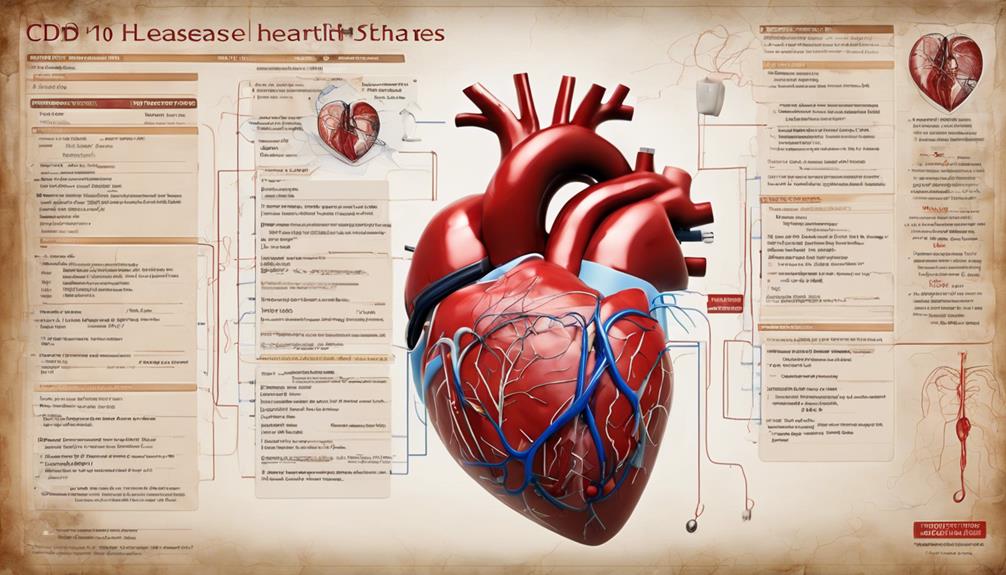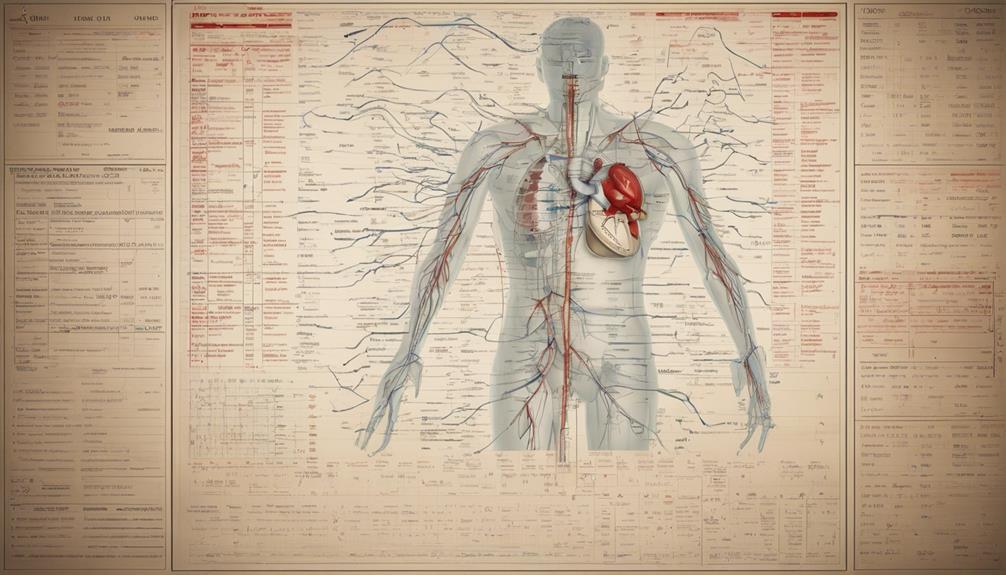With the complexities involved in medical coding, the ICD-10 code for Hypertensive Heart Disease, I11.9, is a key marker. But the importance of this particular code extends beyond its numerical representation.
Understanding the implications and nuances of I11.9 can significantly impact patient care and billing processes. Let's explore how this code plays a pivotal role in accurately capturing and managing cases of hypertensive heart disease, shedding light on the intricacies of medical coding in modern healthcare systems.
Understanding ICD-10 Code I11.9
Understanding the ICD-10 code I11.9 is essential for accurately documenting hypertensive heart disease without heart failure in healthcare coding. This specific code, designated by the World Health Organization (WHO) under Diseases of the circulatory system, is crucial for coding conditions related to hypertension, particularly those affecting the heart.
When utilizing I11.9, it's imperative to ensure that the diagnosis aligns with hypertensive heart disease and doesn't involve heart failure. Following the coding guidelines meticulously is paramount to guaranteeing precise documentation and appropriate billing procedures within healthcare settings.
Significance of Proper Coding

Proper coding for hypertensive heart disease plays a crucial role in ensuring accurate documentation and supporting effective billing and treatment decisions for patients with this condition. When coding accurately, several key points should be considered:
- Accurate documentation: Proper coding ensures the precise representation of the patient's hypertensive heart disease, aiding in tracking the progression of the condition over time.
- Billing and treatment decisions: Correct coding supports appropriate billing for services rendered and helps healthcare providers make informed decisions about the patient's treatment plan.
- Compliance issues: Adherence to ICD-10-CM guidelines is essential to avoid compliance problems and ensure that all coding meets regulatory standards.
- Medical necessity: Clear documentation through proper coding helps justify the medical necessity of treatments provided, facilitating smoother reimbursement processes and reducing the risk of claim denials.
Documentation Requirements for Billing
For accurate billing and coding of hypertensive heart disease, detailed documentation must clearly establish the relationship between hypertension and heart disease. The documentation should outline how hypertension has directly led to heart disease and specify the impact it has had on the patient's condition.
It's crucial to document the medical necessity of treatments provided for hypertensive heart disease to support billing claims effectively. Clear and comprehensive documentation not only justifies the services rendered but also ensures correct reimbursement for the care provided.
By meticulously documenting the relationship between hypertension and heart disease, healthcare providers demonstrate the need for specific treatments and interventions, thus meeting compliance standards. Proper documentation practices are essential to accurately reflect the patient's condition, treatments, and progress, aligning with billing regulations and guidelines for hypertensive heart disease.
Compliance with documentation requirements is vital for healthcare organizations to maintain financial health and provide quality care to patients.
Implications for Patient Care

To ensure optimal patient care for hypertensive heart disease, accurate ICD-10 coding plays a pivotal role in guiding treatment and management strategies. Proper coding of hypertensive heart disease not only supports medical decision-making but also influences patient outcomes and healthcare delivery. Compliance with coding guidelines is essential for effective patient care and billing accuracy. Understanding the implications of hypertensive heart disease coding helps in improving the quality of care provided to patients.
The accuracy of the ICD-10-CM code assigned to a patient's condition can significantly impact the treatment plan and overall management of hypertensive heart disease. By adhering to coding standards and ensuring precise documentation, healthcare providers can enhance the level of care they deliver to individuals with this condition.
Coding Challenges and Solutions
When coding hypertensive heart disease without heart failure, challenges can arise in accurately assigning the correct ICD-10-CM code, such as I11.9. Proper documentation is essential to reflect the absence of heart failure, ensuring precise coding. Understanding the guidelines specific to coding hypertensive heart disease is crucial for maintaining accurate medical records and billing. Crosswalks to ICD-9-CM can be valuable for reference and comparison when coding this condition, aiding in consistency and accuracy.
To address these challenges effectively, healthcare professionals should undergo thorough training to enhance their coding proficiency. Accessing resources like coding manuals, online databases, and educational materials can provide crucial support in mastering the intricacies of coding hypertensive heart disease without heart failure. By investing in education and utilizing available resources, healthcare providers can navigate the complexities of coding guidelines and ensure accurate documentation, benefiting both patient care and billing practices.
Frequently Asked Questions
What Is Hypertensive Heart Disease Without Heart Failure?
Hypertensive heart disease without heart failure refers to a condition where the heart is affected by high blood pressure but doesn't exhibit symptoms of heart failure.
It's crucial to accurately document and code this condition, with ICD-10-CM code I11.9 being the classification for such cases.
Understanding this specific code aids in precise billing and treatment strategies for individuals with hypertensive heart disease without heart failure.
What Is the ICD-10 Code for I13.9?
Let's dive into the details of the ICD-10 code I13.9. Understanding its significance is crucial for accurate coding. It signifies the intricate relationship between hypertension and concurrent heart and kidney issues.
Proper documentation ensures precise code allocation, aiding in comprehensive management strategies. Embracing the specificity of I13.9 enhances our ability to address hypertensive complications effectively.
What Is the ICD 9 Code for Hypertensive Heart Disease?
We always strive to provide accurate information.
The ICD-9 code for hypertensive heart disease is 402.9.
Proper coding was crucial for billing and treatment decisions.
However, with the transition to ICD-10, coding for hypertensive heart disease has become more specific and accurate, enhancing overall healthcare practices.
What Is the ICD-10 Code for I13 20?
We're here to clarify the ICD-10 code for I13.20.
This code isn't directly linked to hypertensive heart disease with heart failure but falls under the broader category of hypertensive heart and chronic kidney disease.
It's crucial to accurately document the specific conditions present to ensure proper coding and treatment.
Conclusion
In conclusion, mastering the ICD-10 code I11.9 for hypertensive heart disease is crucial for accurate billing and treatment. Proper documentation ensures seamless patient care and effective management of this condition.
By adhering to coding guidelines, healthcare providers can navigate the complexities of healthcare reimbursement while prioritizing patient well-being.
The juxtaposition of meticulous coding and compassionate care is essential in delivering optimal outcomes for individuals with hypertensive heart disease.









